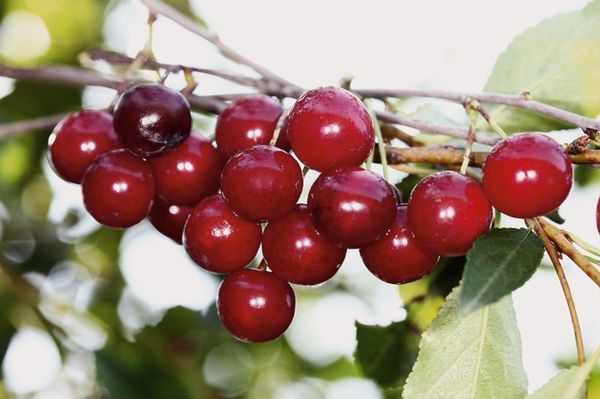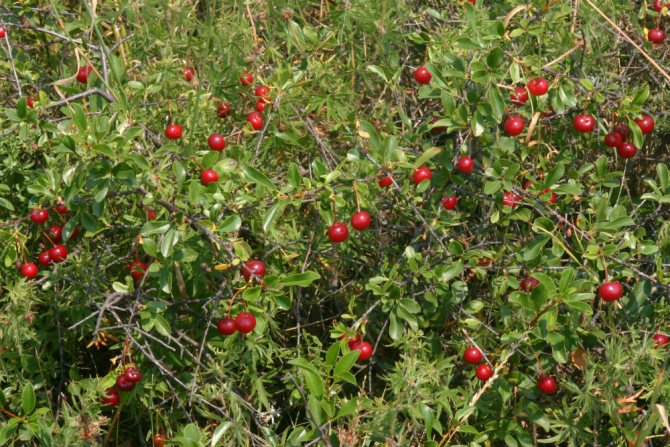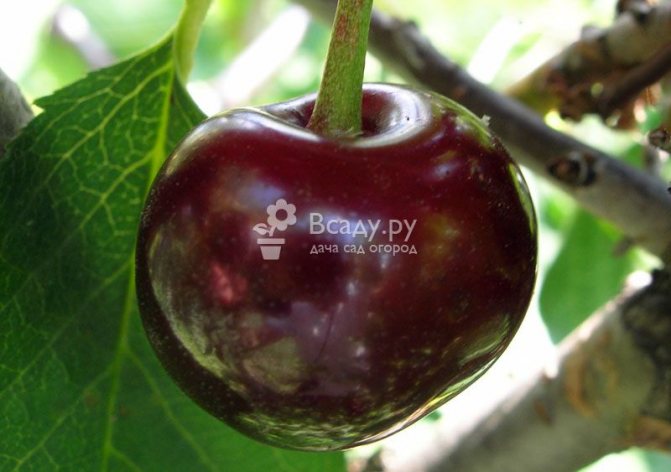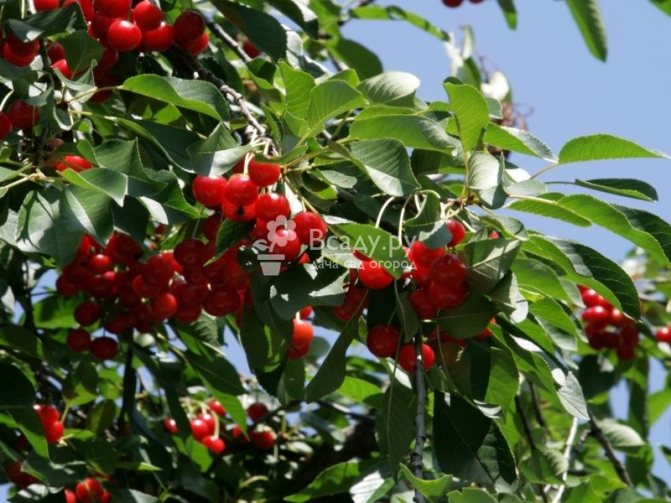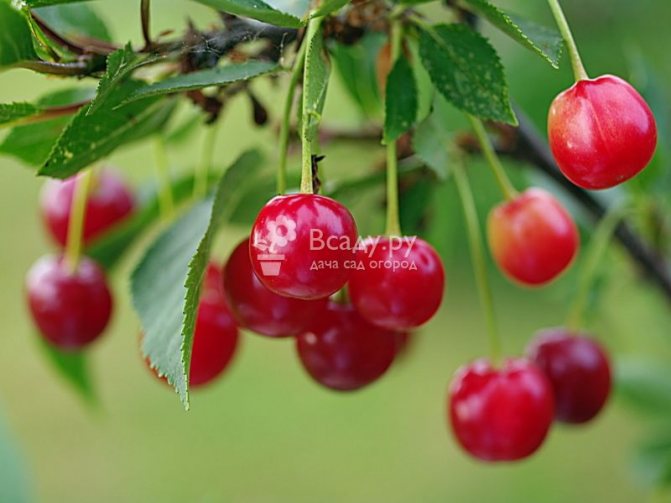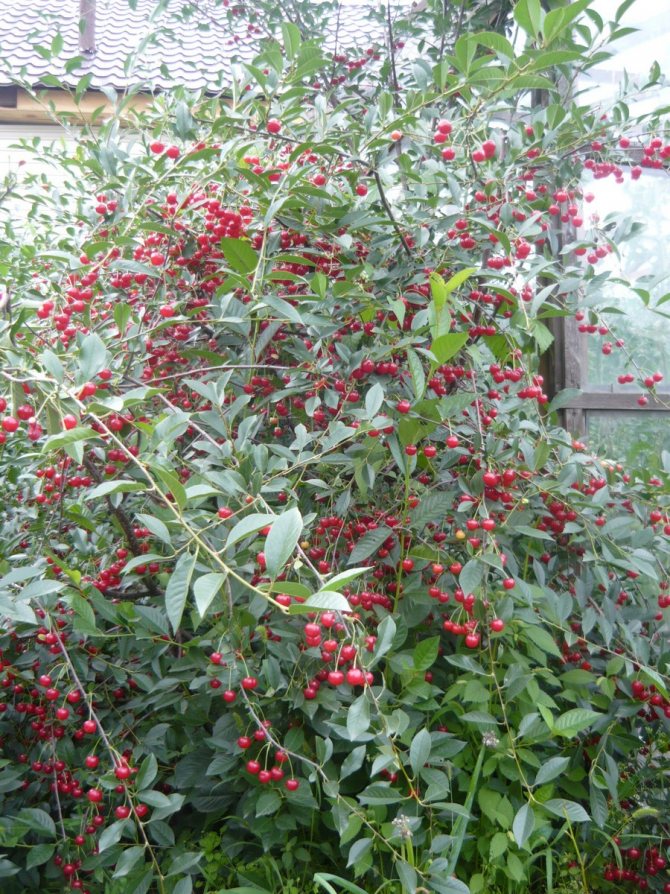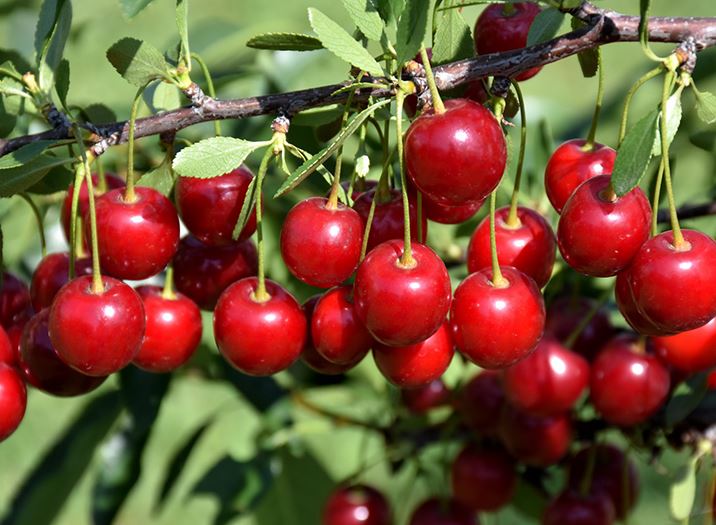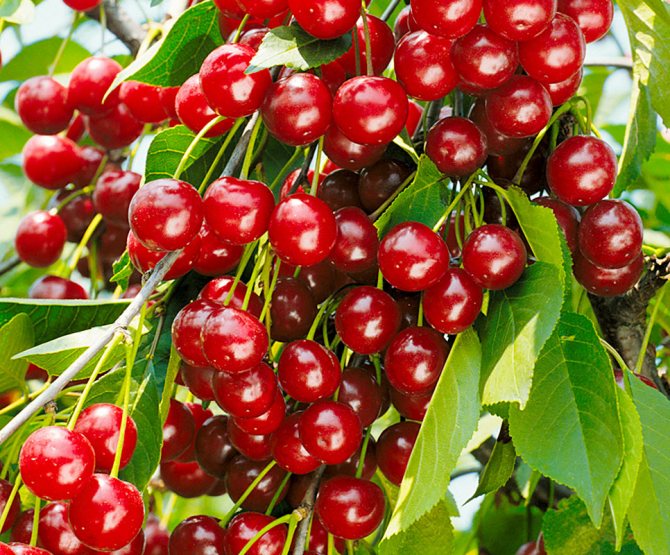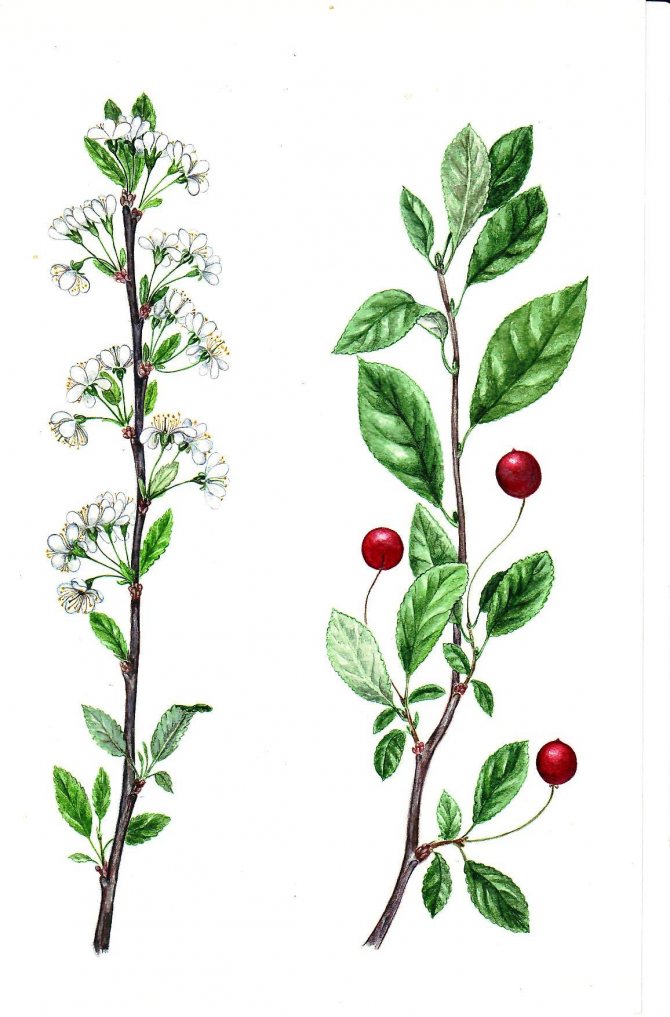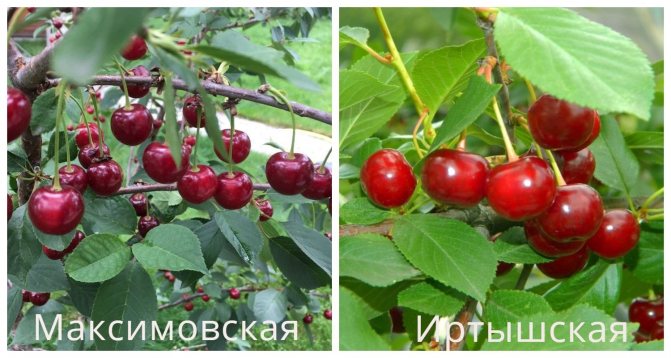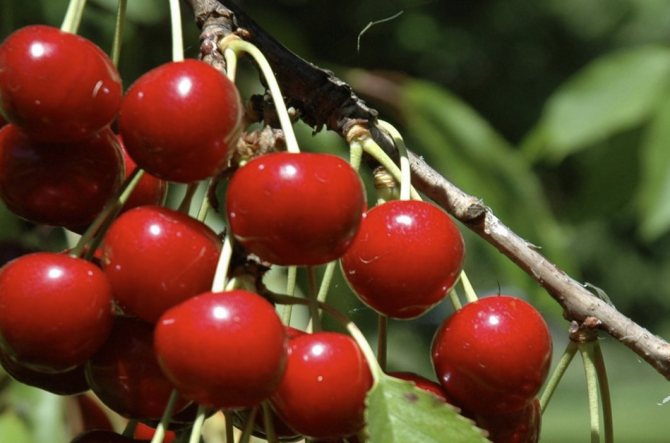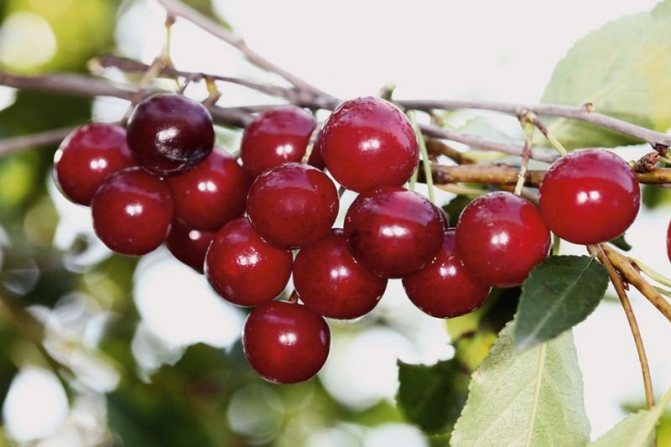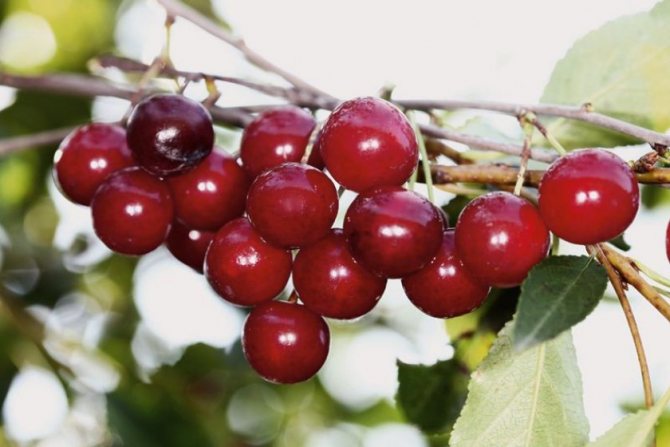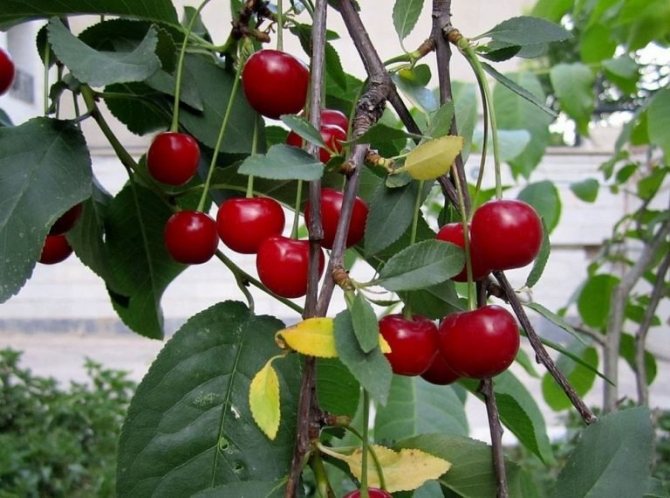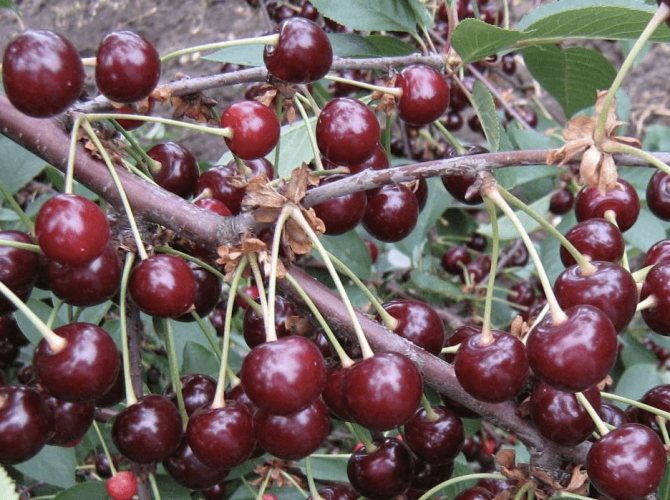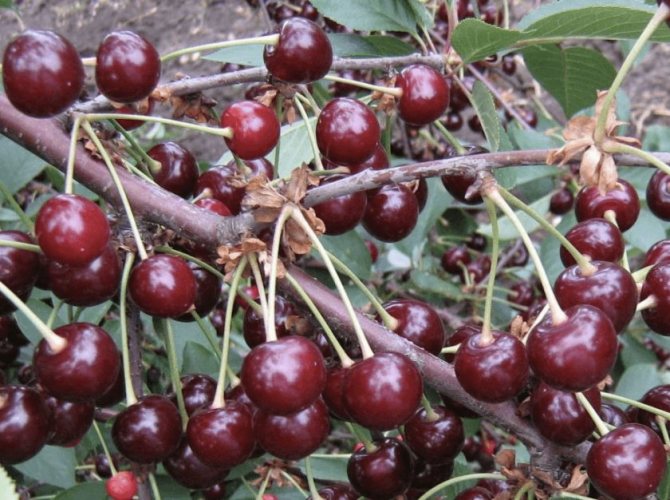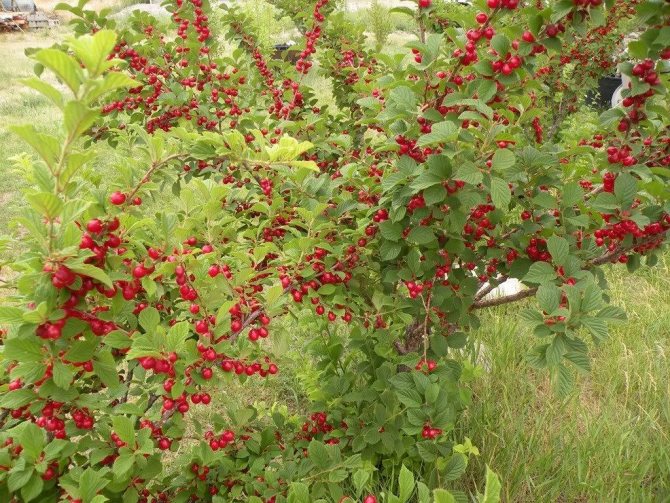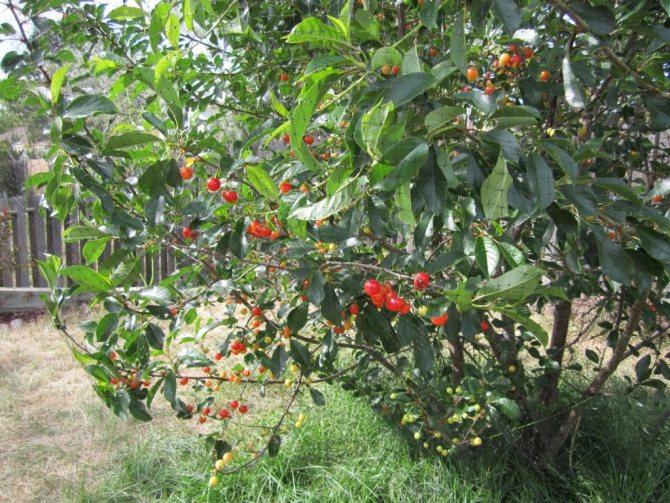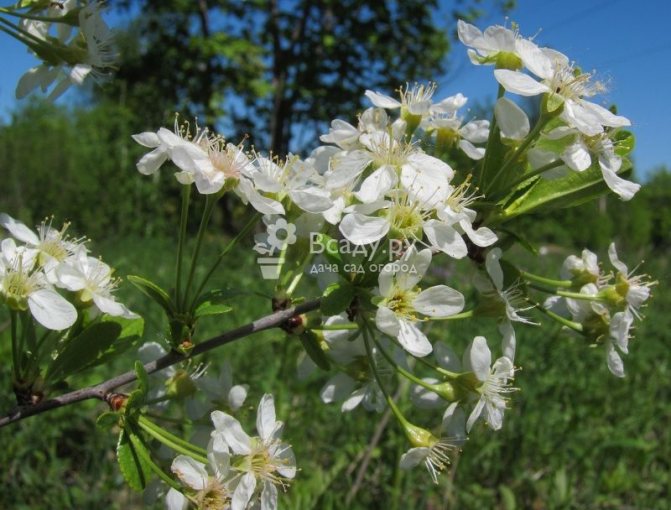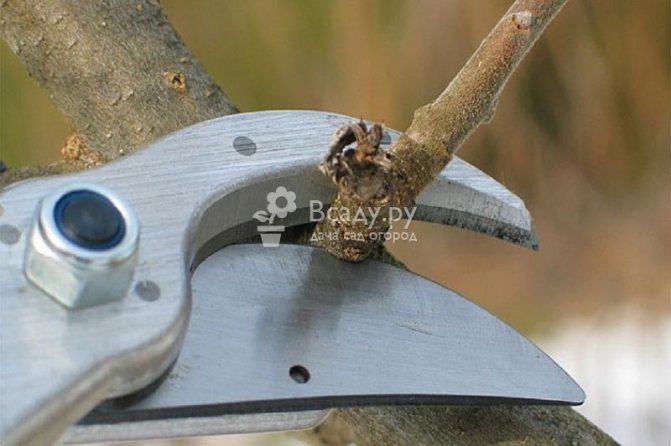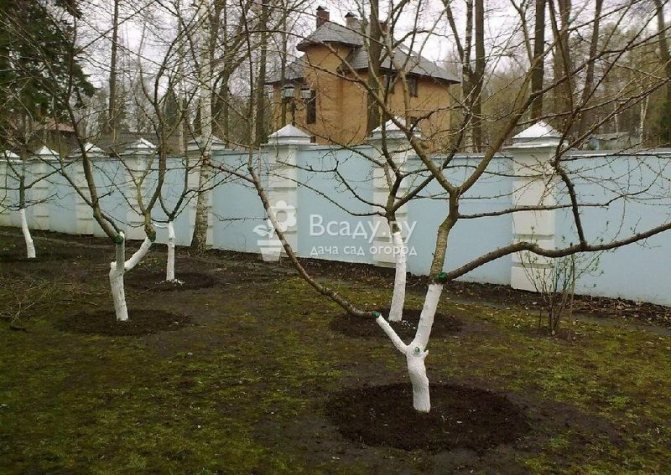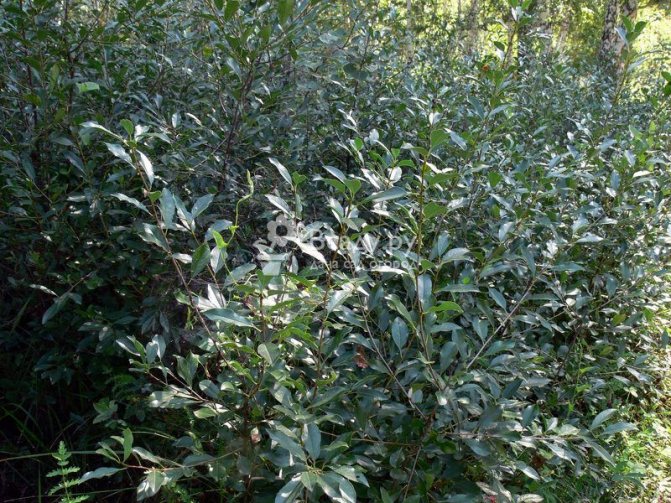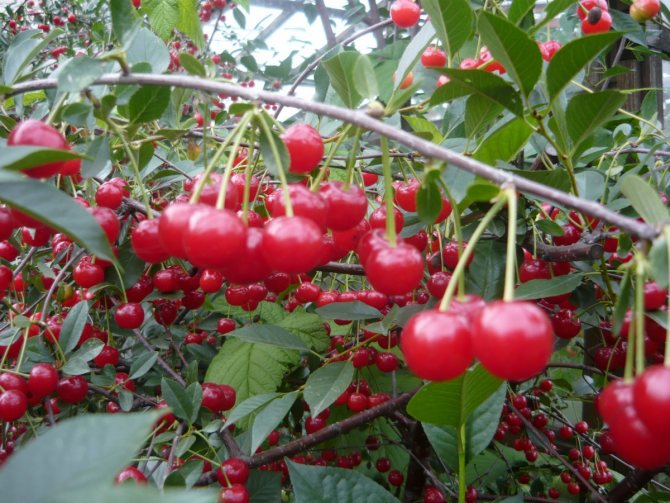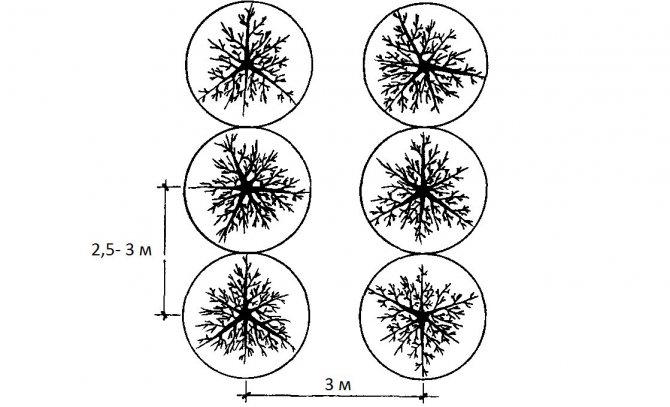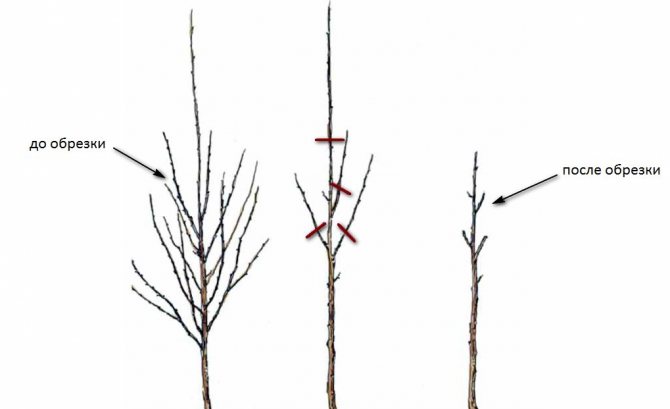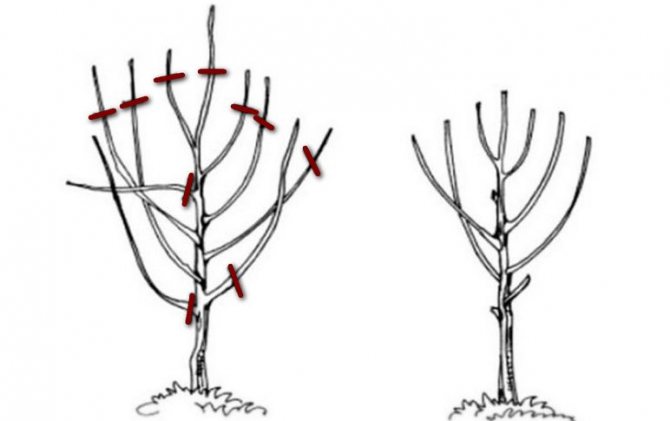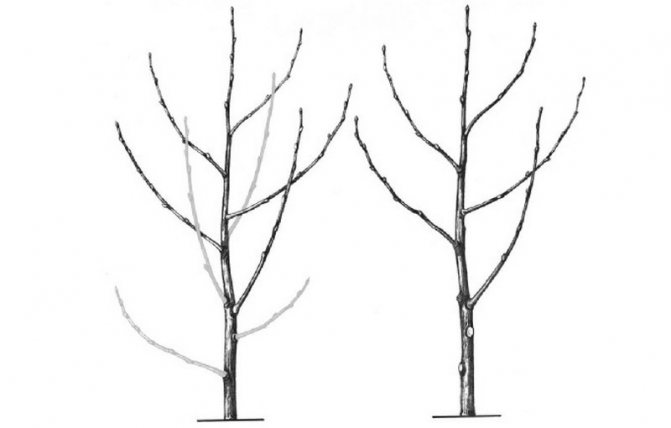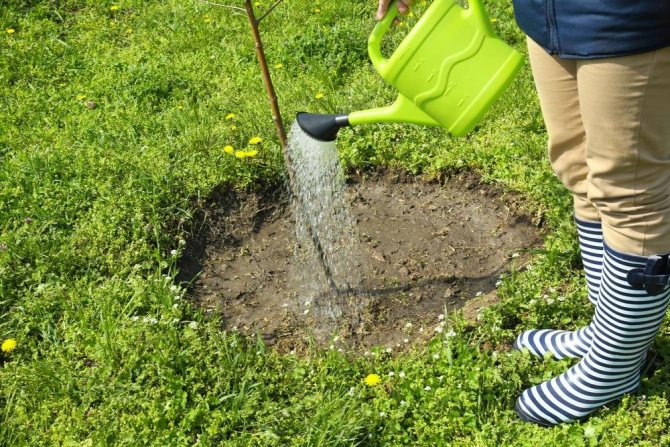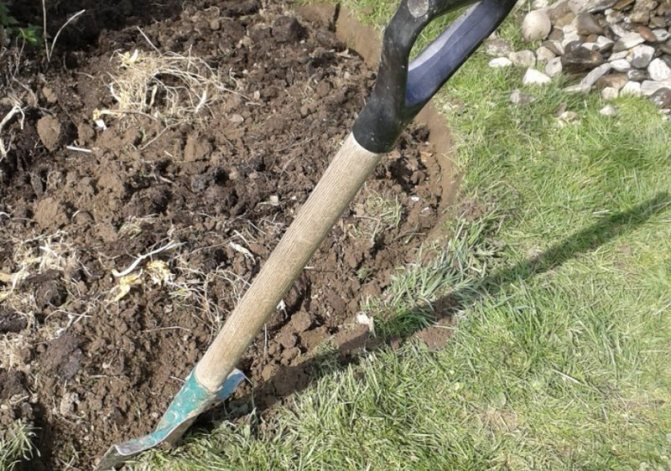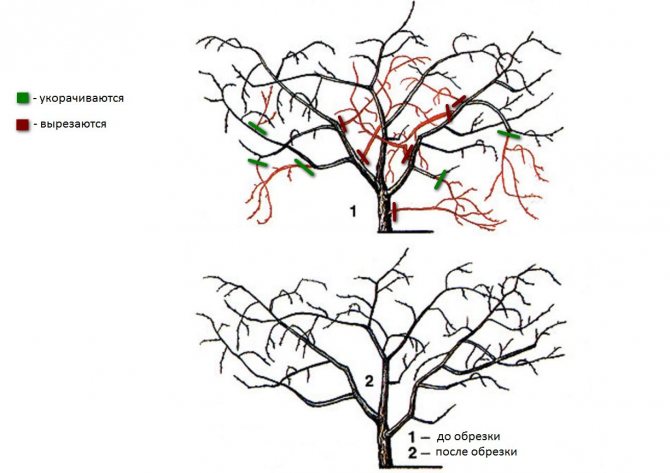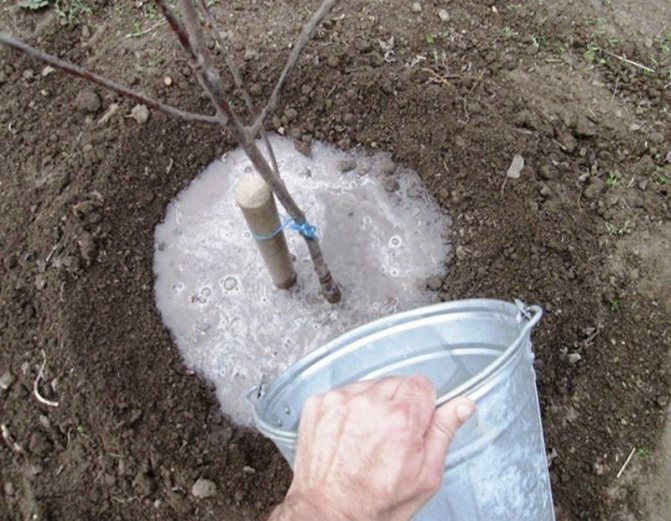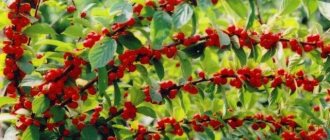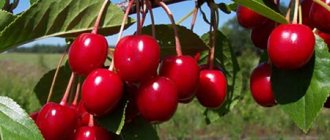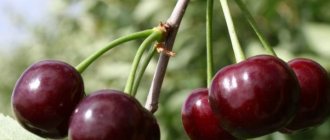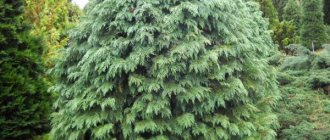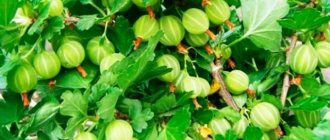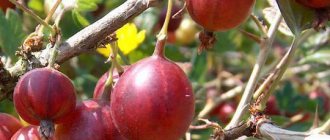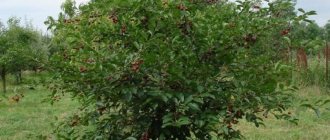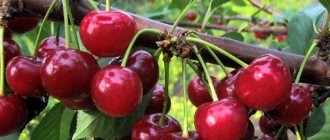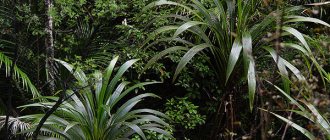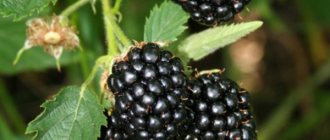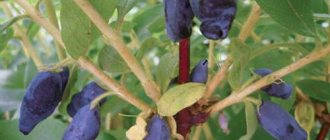- Features of the variety
- Flowering and fruits
- Popular varieties
- Winter hardy varieties
- Non-susceptible varieties
- Care advice
- Planting and fertilizing
- Pruning
There are many types of cherries, one of which is the bush cherry. This is a whole family that includes many varieties with different fruit flavors and tree shapes. Wild bush cherry is found throughout the middle lane. Cultivation began in the Leningrad region.
Plant characteristic
Shrub cherry is not as popular in Russia as tree cherry. It is divided into several varieties, we will consider them further. Steppe cherry is a shrub with a small spreading crown. The average height of the tree cherry is 2.5 m, the shrub cherry grows by only 1 - 1.5 m. The plant actively forms root shoots, due to which its complex renewal takes place.
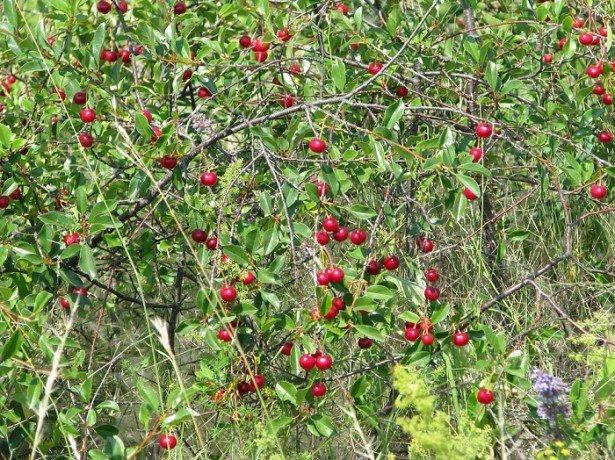
The advantage of steppe cherry is that it is resistant to drought and cold. With proper care, the plant can withstand frosts down to -45 degrees. Steppe cherry does not impose high requirements on the composition of the soil. The soil for her can be:
- stony;
- loamy;
- sandy.
If the soil in the garden is poor, the shrub will grow anyway. Steppe cherry bears fruit well. On my own I will add that it is resistant to diseases and pests. Steppe cherry has decorative qualities, it is an adornment of the garden plot.
The plant has only one drawback: it is not shade-tolerant. The fruits of the steppe cherry have a tart taste. The plant bears fruit for a long time, but it is important to create suitable conditions.
Features of the variety
Description: cherry or shrub cherry variety is a plant with a height of 1 to 3 m, depending on the specific variety. Reproduction takes place using root shoots or cuttings. An adult berry crop has a well-developed root system with a large number of adventitious shoots. In young plants, their color is red-brown, in adults it is gray-brown. The leaves are oval in shape, the tips are pointed. The foliage is dark green.
The advantages of the variety.
- Good frost resistance for most varieties. Although young plants need shelter with burlap or agrofibre for the winter, an adult tree calmly survives the cold.
- Drought resistance. Strong roots hold moisture well, which allows the plant to thrive in hot weather. A characteristic property for all varieties.
- Unpretentiousness. Even on the poorest soil in terms of nutrients, steppe cherry gives a good harvest.
- Taste. The fruits are suitable both for fresh consumption and for processing into jams, compotes, juices, etc.
- The possibility of using for decorative purposes. The neat shape of the plant, as well as rich flowering and beautiful berries can be a decoration for the site.
Disadvantages:
- low shade tolerance;
- specific taste of fruits of some varieties;
- low resistance to fungal diseases and pests.
Planting steppe cherries
I recommend planting steppe cherries in neutral soil. It won't be good if you choose a shaded area. Planting shrubs in plains is highly recommended. Water it in moderation.
The water should not stagnate, otherwise the roots will start to rot. The plant is drought tolerant. There is no need to water it often. I can say that the steppe cherry does not require painstaking care, but nevertheless, we must pay due attention to it!
Growing
For cultivation, it is recommended to purchase two-year-old seedlings. They are planted in early spring. Planting pits with a depth and diameter of half a meter are prepared in two weeks: they are filled with humus and phosphorus-potassium fertilizers dissolved in water.
The roots of the seedlings are pre-pruned, dipped in a clay chatterbox. A mound of earth is poured at the bottom of the pit, on which the roots are carefully laid out.
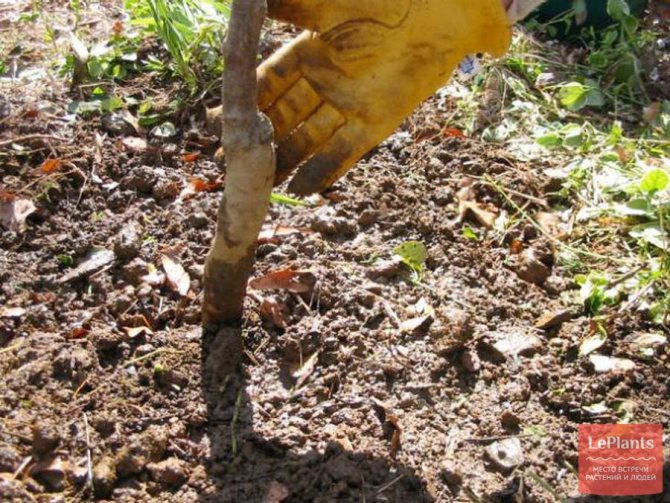

ON THE PHOTO: It is very important that the root collar is located just above the soil level.
After planting, the plant is watered, the soil is mulched with peat or sawdust.
Reproduction by seeds (bones) is ineffective, since varietal characteristics are lost. Of the vegetative methods, the use of shoots is recognized as the simplest and most effective. In the spring, future bushes are pruned with a part of the uterine root, watered all summer, the soil is carefully loosened. After the winter period of dormancy, they dig out, process the sections with garden pitch, cut the above-ground part and plant it in the designated place.
Proper care of the shrub
Steppe cherry care is:
- timely watering;
- loosening the soil to a depth of 4-5 cm;
- top dressing;
- pruning.
In order for the steppe cherry to grow well, it is necessary to weed it. By loosening the soil, the shrub will receive more oxygen. However, when carrying out such a procedure, it is important not to injure the roots.
In order for the cherry to bloom actively and give tasty fruits, it is necessary to fertilize it 3-4 times a season. The plant positively perceives products containing superphosphate. I recommend bringing them in in the fall. Fertilize steppe cherries with mineral additives: add wood ash.
Thanks to such means, the plant will more actively form shoots. Add water after the cherry has faded, then during the period of fruit formation. Be sure to water the shrub before feeding it.
Steppe cherry needs a corrective haircut. It is better to carry out this procedure in early spring. It is important to spray the plant on time using insecticides. Such a measure will avoid pests.
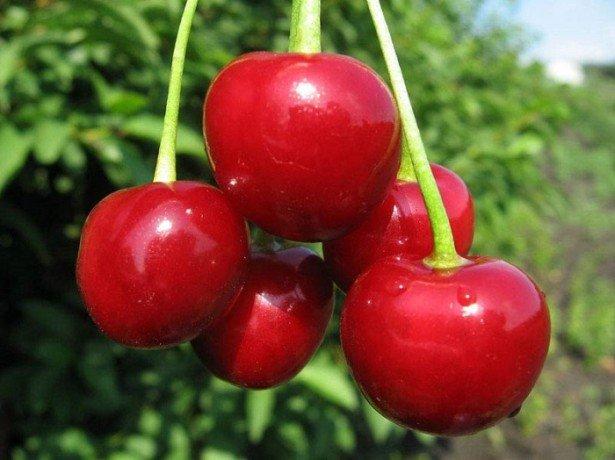

Features of planting and care
It is better to lay a cherry shrub garden on a gentle slope, where there is no risk of spring stagnation of melt water. Choose an open, sunny place with sufficient area for the growth of shoots. Planting and caring for bush cherries is not very difficult, but it contains several important points.
See also
Description and characteristics of the Molodezhnaya cherry variety, planting and care, pruning and pollinatorsRead
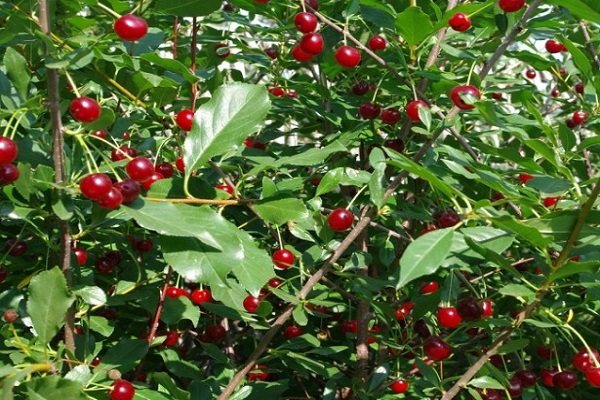

Important! On a plot nearby, it is advisable to plant other varieties of cherries (pollinators) with similar flowering times, this will increase the yield by 2-3 times.
Soil preparation
Steppe cherry is less demanding on soil than tree cherry, but responds well to the introduction of organic and mineral fertilizers when planting.
The root system of the shrub lies close to the surface, so it is enough to prepare a fertile layer of 30-40 cm. For this, humus (10-12 kg / m2) and complex mineral dressing (150 g / m2) of superphosphate are introduced under deep digging. Sowing green manure with subsequent digging at the budding phase will help improve the structure of the soil and fill it with organic matter.
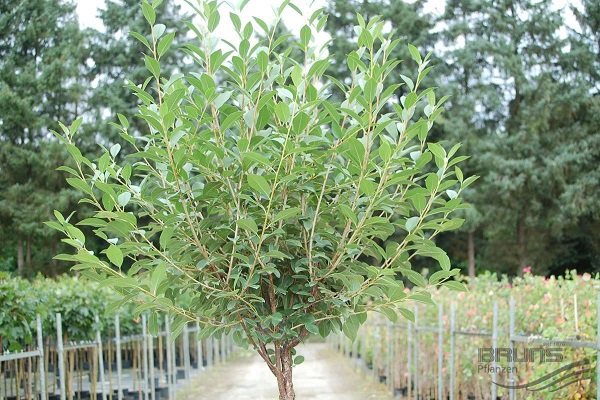

Advice. It is better to dig holes for seedlings in advance, at least a month before planting.
Landing
It is important to start planting seedlings in the fall, three to four weeks before the first frost, or in the spring, before the start of sap flow:
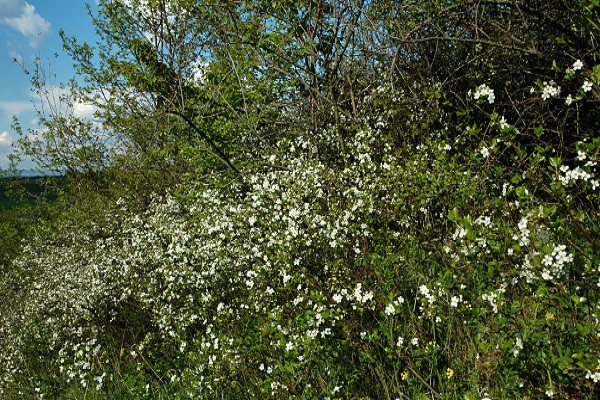

- The pit is filled in 3-4 days with fertile soil with the addition of organic and mineral components (humus 4-5 kg, potassium salt 50 g, superphosphate 150 g, ammonium sulfate 50 g).
- Healthy young bushes with a developed fibrous root have a root collar a couple of centimeters above ground level.
- Around the seedlings, the ground is compacted with your feet. After watering, the soil settles, and the neck should be at ground level.
One of the reasons for the increased frost resistance of steppe cherry is the ability to retain snow between bushes and undergrowth. It makes sense to place seedlings close to each other (1.5-2 x 2 m). Planting is mulched with a thick layer of dry grass or peat.
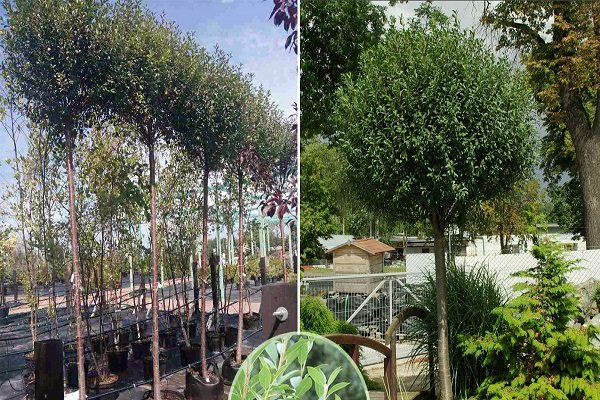

Fertilizer
With proper soil preparation in the first year, additional fertilizing is not necessary. For the next 2-3 years, one spring nitrogen fertilization (urea 20 g / m2) is enough for digging. Further, the bushes enter the fruiting period and require a more serious introduction of nutrients: in the fall - humus for digging (8-10 kg / m2), in the spring - superphosphate 50 g / m2, potassium chloride 10-20 g / m2, urea 25 g, s subsequent termination.
See also
Description of Uyfehertoi Fyurtosh cherry varieties and history, cultivation featuresRead
Watering
Although bush cherry is considered not very demanding on soil moisture, it gratefully responds to timely watering with an increased yield and juiciness of drupes. Sufficient watering is considered 2-3 times per season: after flowering, during the pouring of fruits, at the end of summer. Shallow loosening is recommended after each watering 2-3 days later.
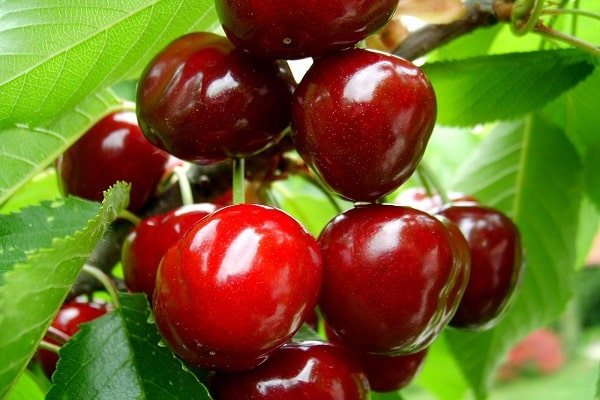

Pruning
Shrub cherry is characterized by independent formation of a rounded crown. Therefore, pruning is mainly aimed at reducing thickening and rejuvenating. Fruiting usually occurs during last year's growth, so only the extra branches growing inside the crown are removed.
Rejuvenation of cherry bushes is carried out after the growth decay, cutting off the skeletal branches in the places where branching stops.
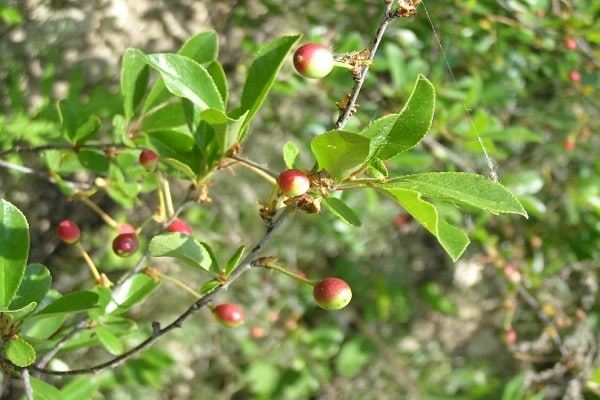

Since the steppe "inhabitant" is characterized by a large amount of overgrowth, thinning should be carried out in a timely manner. The lifespan of one bush without a decrease in fruiting is about 8-10 years. To rejuvenate the planting, strong and healthy layers are left, gradually replacing the old ones.
Plant pruning
Cherries can be adjusted in spring and fall. Thanks to this procedure, the decorativeness of the garden culture is increased. Corrective pruning promotes crown formation and facilitates shrub maintenance. With proper pruning, the plant becomes resistant to harmful insects.
Carrying out such a procedure, it should be borne in mind that the plant bears fruit on last year's shoots. I recommend performing a corrective haircut once a year. Freshly planted plants should also be pruned, so that they will form a strong immune system.
Corrective trimming allows you to extend the fruiting period. When carrying out it, remove dry and affected branches. When doing a rejuvenating haircut, shorten the branches a few centimeters. Formative pruning is also helpful.
In this case, the tip of the shoot is removed and cherry tillering is stimulated. The crown of the plant should not be too dense, otherwise there will be a deficiency of nutrients. Correct pruning of cherries is the key to a rich harvest!
Chemical processing and pruning of bush cherries
Cherry is a plant that bears fruit exclusively on annual branches. Therefore, it is extremely important to carry out timely pruning of old branches. Otherwise, the quality of your crop will deteriorate significantly. The berries will become noticeably smaller, as will their number decrease.
Pruning
The most favorable time for pruning cherries is spring. The rules are simple: remove all wounded and withered branches. Also, it will not be superfluous to get rid of all the old processes at the roots and branches (over 6 years old). The ideal number of shoots on a healthy cherry is 10-15 pieces.It is worth choosing the most beautiful and branched ones. Only 3-4 shoots should be left at the roots.
Spraying
The most dangerous time for cherries is the flowering period. After all, it is at this time that fungi and parasites become most active. Therefore, it is worth taking good care of the prevention of your cherry tree.
For example, copper sulfate is great for protecting against disease. There are many other drugs as well. For example, Agravetin, Fitoverm, Zircon, Ekorberin and phytosporin are considered effective and high-quality.
To prepare a solution based on any of these drugs, you should carefully read the instructions. Any wrong action can lead to unpleasant consequences, whether it is poisoning the plant or the drug does not work.
In addition, some drugs can be harmful to other plants or people. Be sure to make sure your actions are safe.
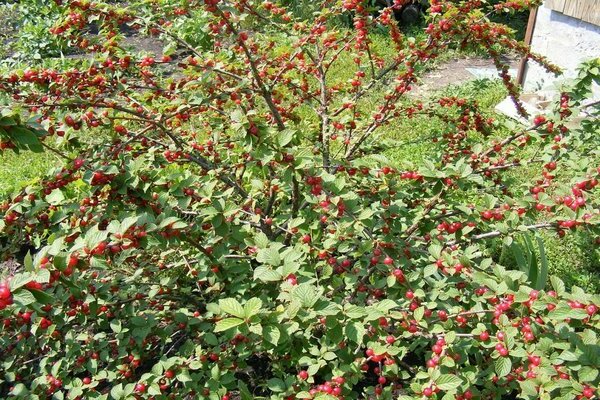

Steppe cherry varieties
Most Popular:
- Generous;
- Bolotovskaya;
- Ashinskaya;
- Maximovskaya.
Generous. On average, the shrub grows 2 m, its crown is wide, the branches are slightly raised. The peculiarity of the variety is long glossy leaves. The inflorescence usually includes 3 flowers. The berries of a generous cherry are dark red, tasty, suitable for transportation.
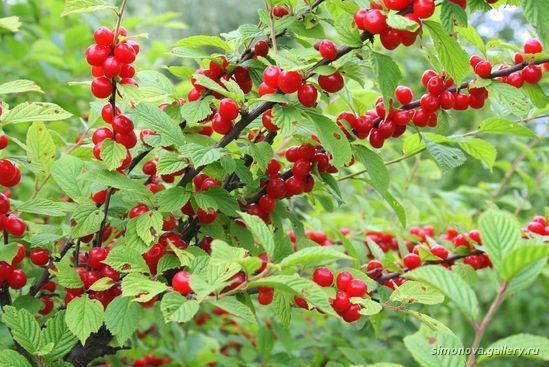

The shrub is self-pollinated, blooms for several days in May, bears fruit in mid-August. If you take care of it properly, it will bear fruit for 30 years! Gardeners appreciate the generous cherry for its weather resistance.
Bolotovskaya. This variety is slightly lower than the previous one: the maximum height of the shrub is 1.8 m. Its leaves are long, smooth, the fruits are relatively large, rich red. The pulp has a characteristic sourness.
Berries of the Bolotovskaya variety are suitable for transportation. If transported correctly, they will not crack. Ripening of berries occurs at the end of summer. The main advantage of the Bolotovskaya variety is its resistance to drought.
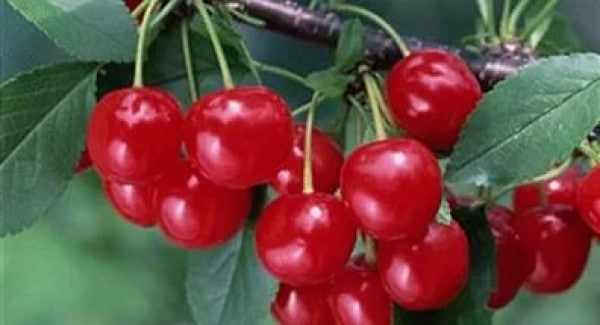

Ashinskaya. Cherry of this variety is tree-like, grows to 2.5 m. The plant has a crown in the form of a cone. Its leaves are oval, glossy, the petioles are small. Ashinskaya cherry is distinguished by its small flowers, collected in small inflorescences. The berries of this variety are large, almost burgundy, suitable for transportation. Fruiting in this variety occurs in the 4th year.
Maximovskaya. This is a medium-sized shrub up to 1.7 m tall. His crown is not too thick, has a pyramidal shape. The branches are light in color, the leaves are glossy, small, elongated. The berries are red, also slightly elongated, ripen at the end of summer. This variety is propagated by cuttings.
Flowering and fruits
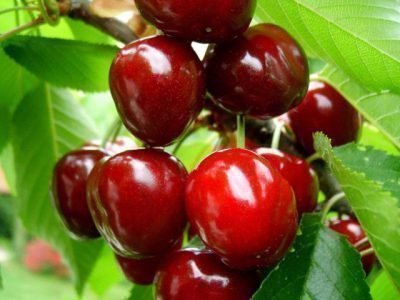

The bush cherry is covered with a large number of small flowers during the flowering period. The plant is partially self-fertile, therefore it needs pollinating plants.
Most varieties of berries are not very large, but there are also species with large fruits. The steppe cherry is dark red in color with a firm skin and the same pulp. The berries taste sweet and sour and slightly watery.
The best varieties of the species
- Bolotovskaya steppe cherry has a spreading middle crown. The variety is winter hardy. Bears fruit abundantly and annually, has a high self-fertility. The shrub is undersized. Cherries have a technical purpose and are used for preserving and preparing desserts. One of the disadvantages is susceptibility to fungal diseases.
- The Altai swallow steppe cherry is characterized by a raised dense crown. The dark red fruits have a dense juicy pulp and a sweet and sour taste. The fruits ripen in mid-July and give a bountiful harvest. Up to 8 kg of cherries are harvested from the bush. The swallow bears fruit in the second year of planting. The variety is not afraid of cold weather and is resistant to coccomycosis. The only drawback is the average size of the berries.
- Molodezhnaya has the best taste among bush cherry varieties. The berries ripen late, but they can be on the branches for a long time. Some gardeners pick dried cherries directly from the branches.
- Toy is a variety obtained by crossing with cherries. The fruits are sweet and juicy. Bears fruit in July. The main advantage is the incredibly large number of berries. Up to 75 kg can be harvested from one bush.
- The chocolate girl has a back-pyramidal crown. The fruits are juicy, with a slight sourness. The variety gives high yields, is resistant to frost and drought. Disadvantage - prone to coccomycosis.
- Oka ruby has large fruits and is considered a self-fertile shrub.
- Zhukovskaya has large delicious fruits, self-pollinates, the harvest is harvested at the end of July. Resistant to fungal diseases, winter well.
